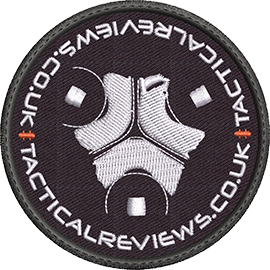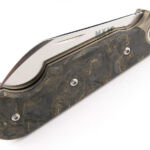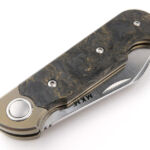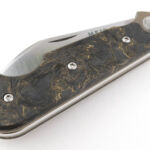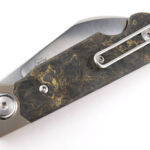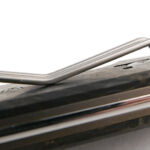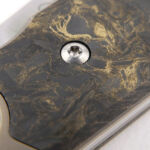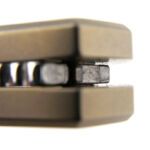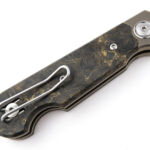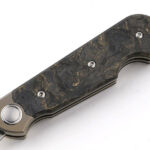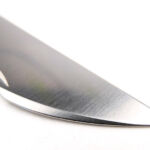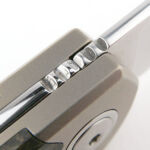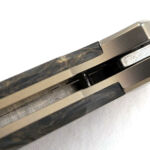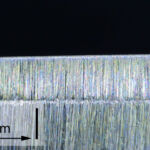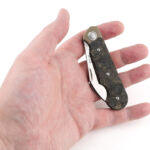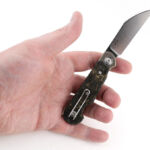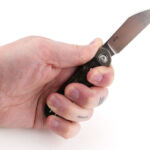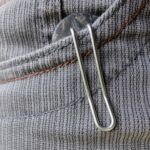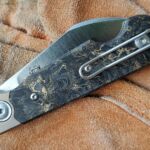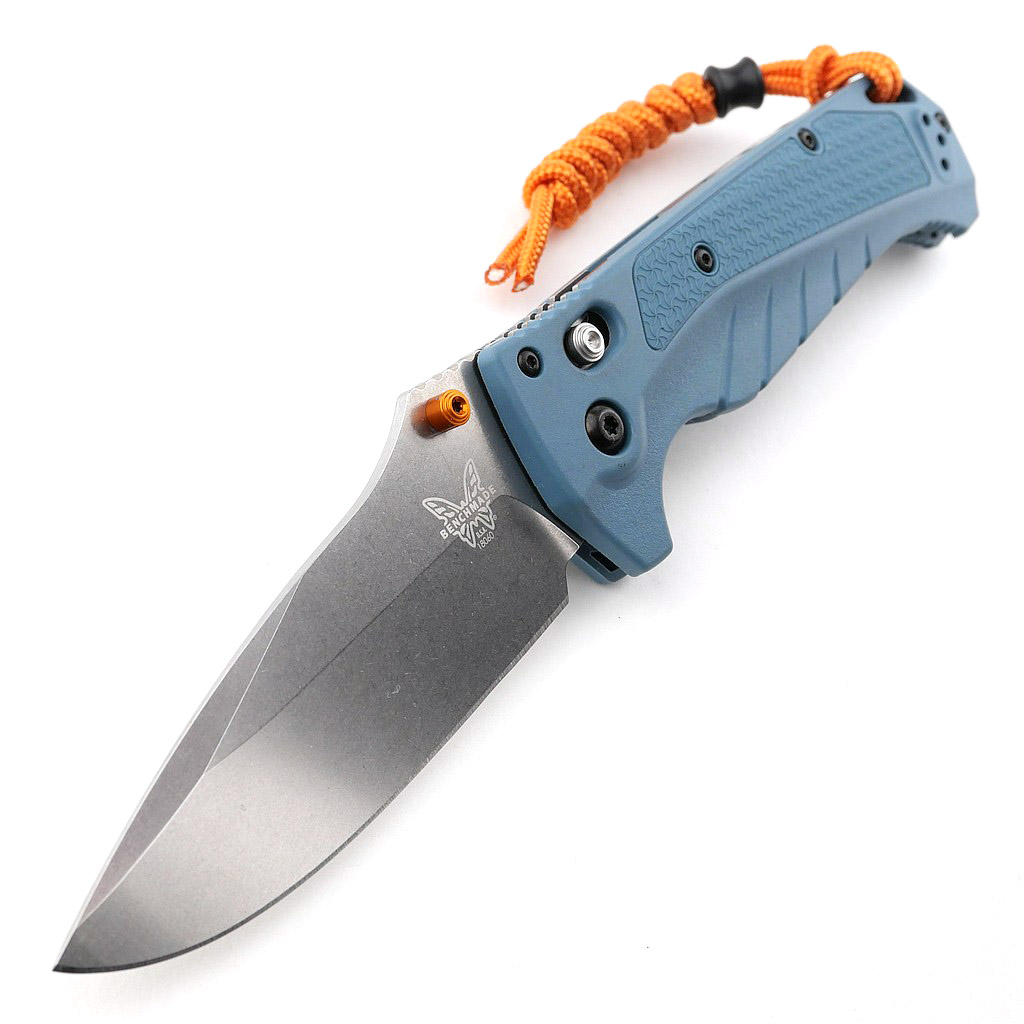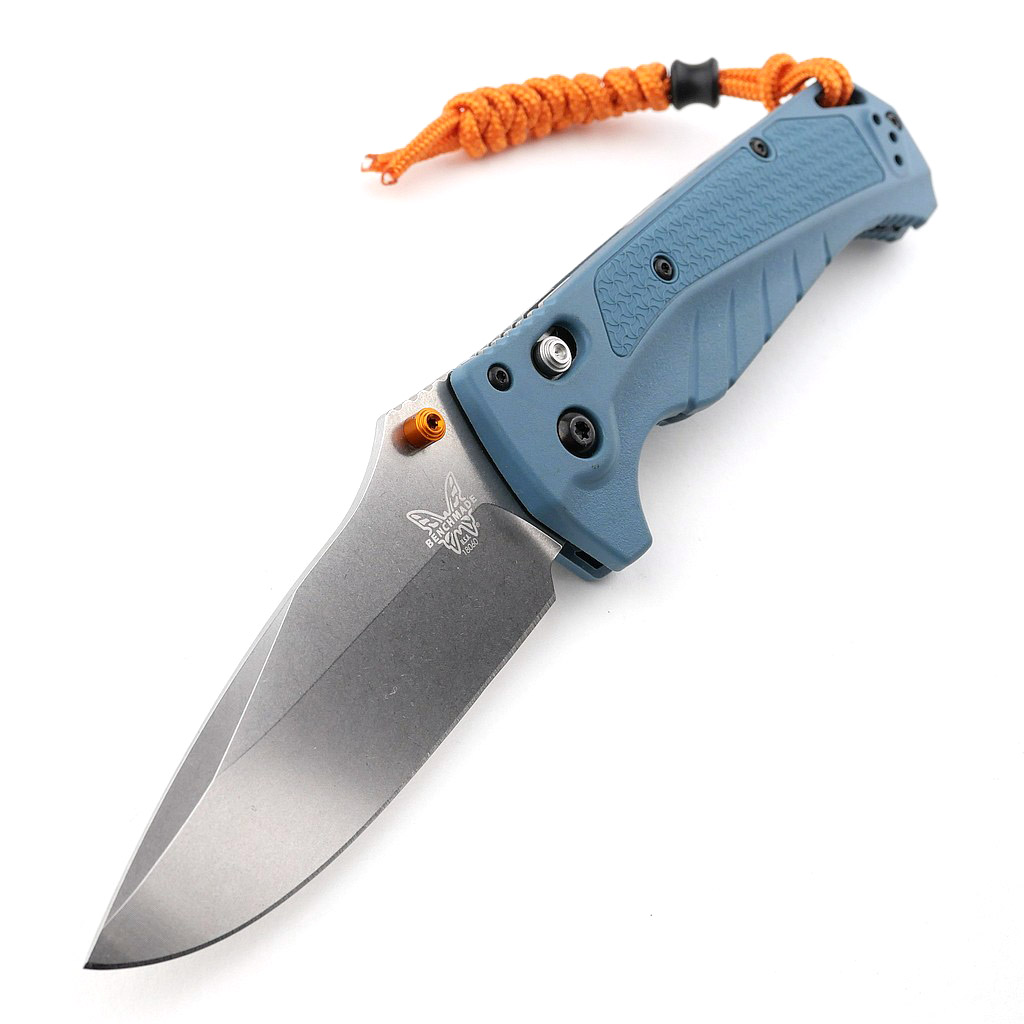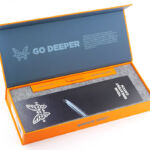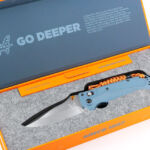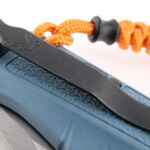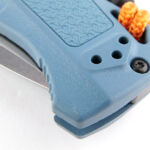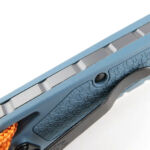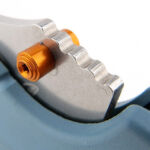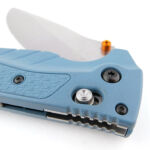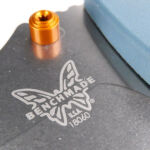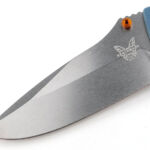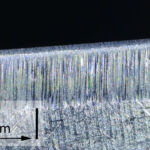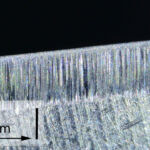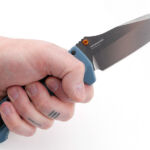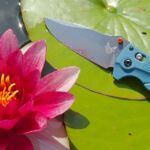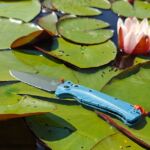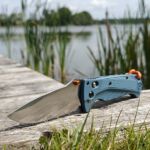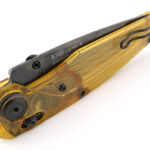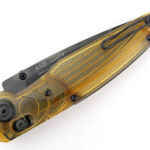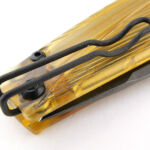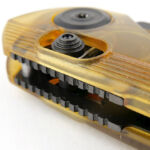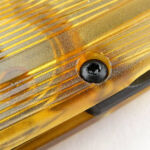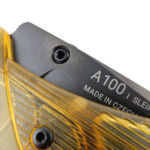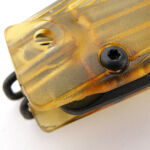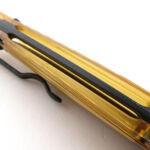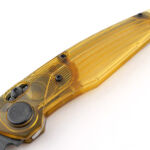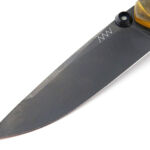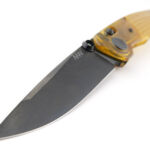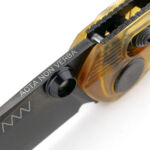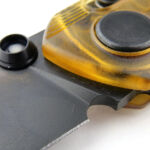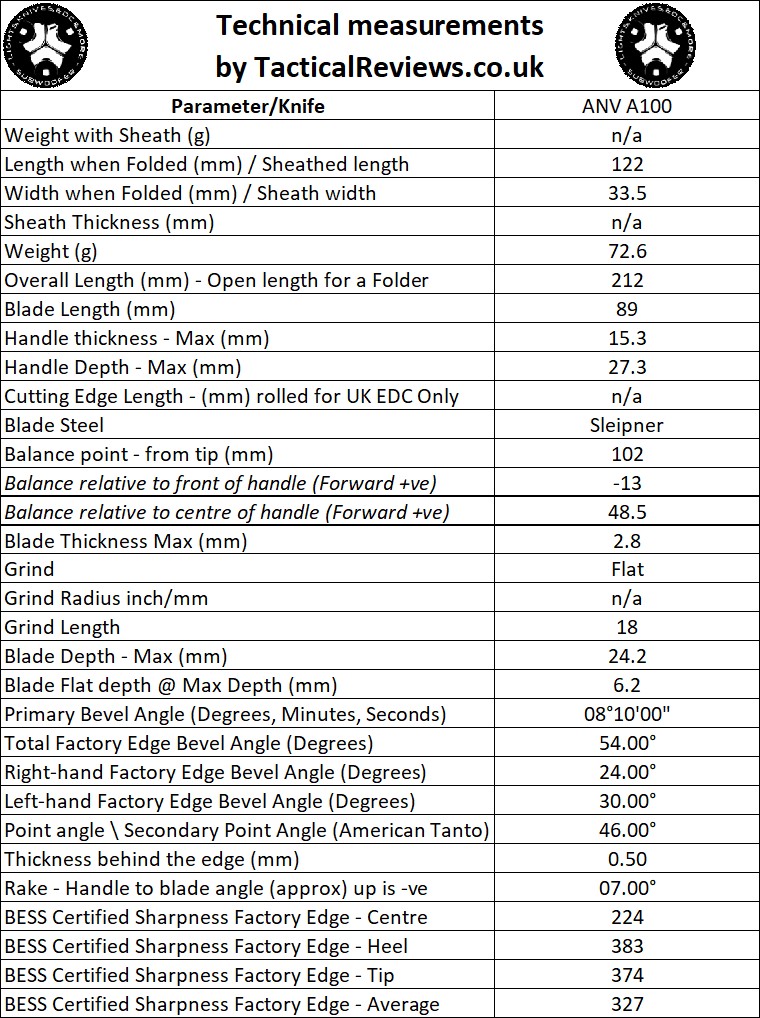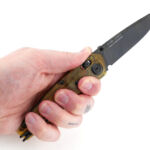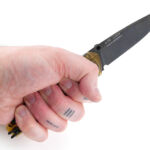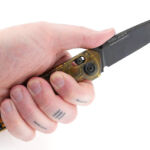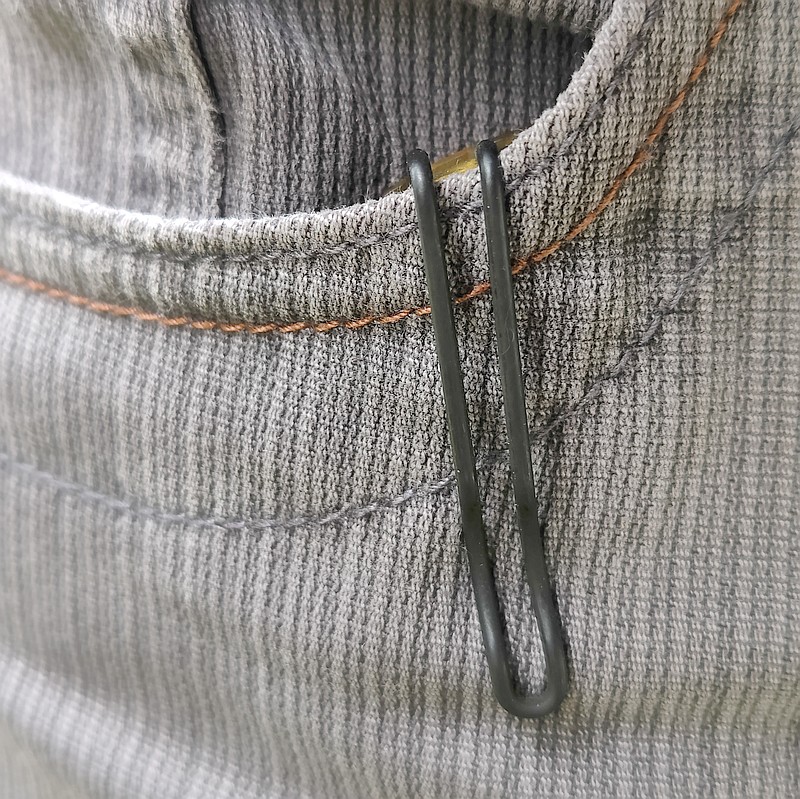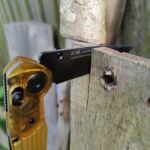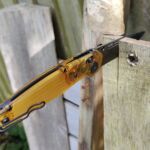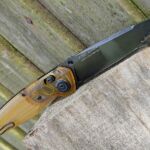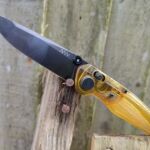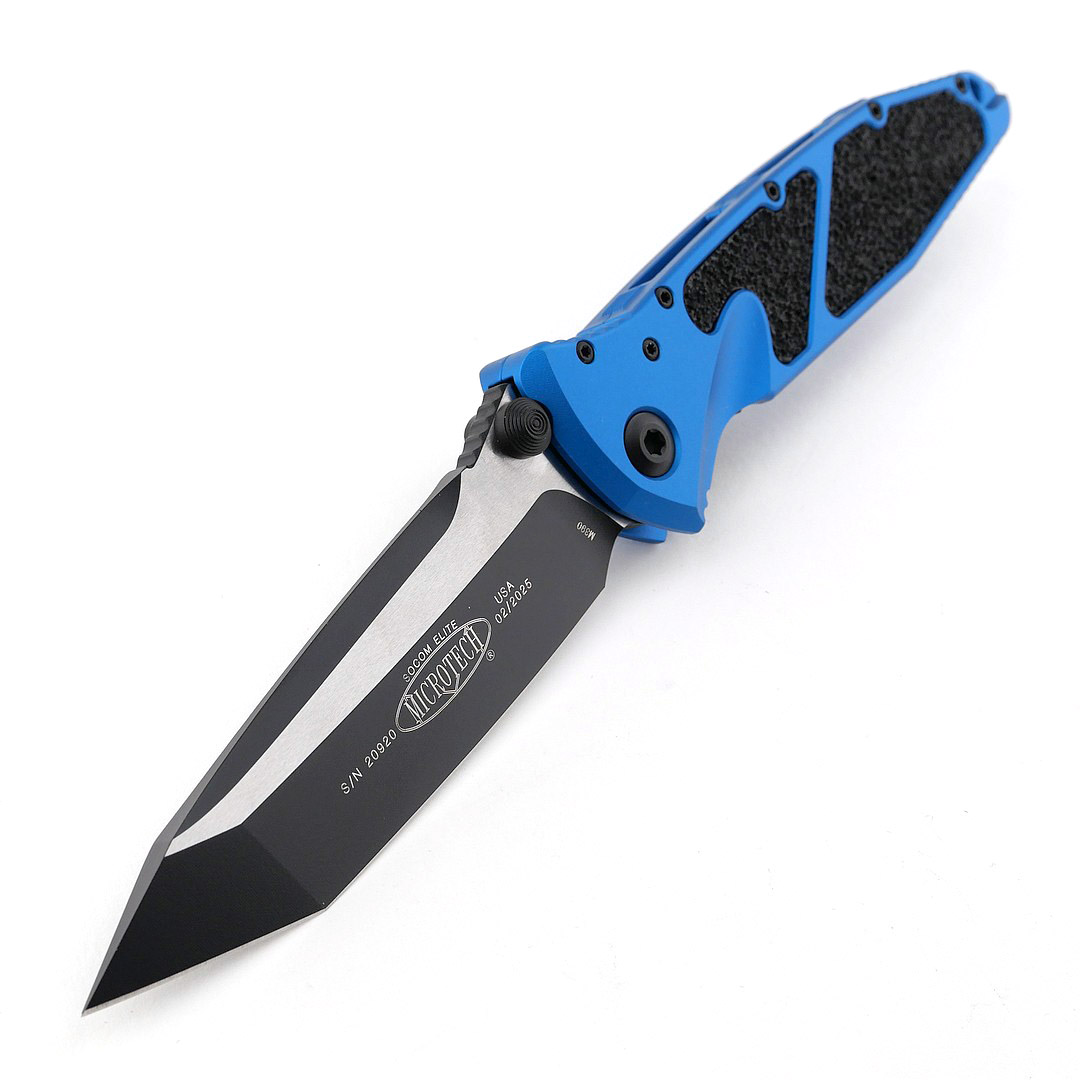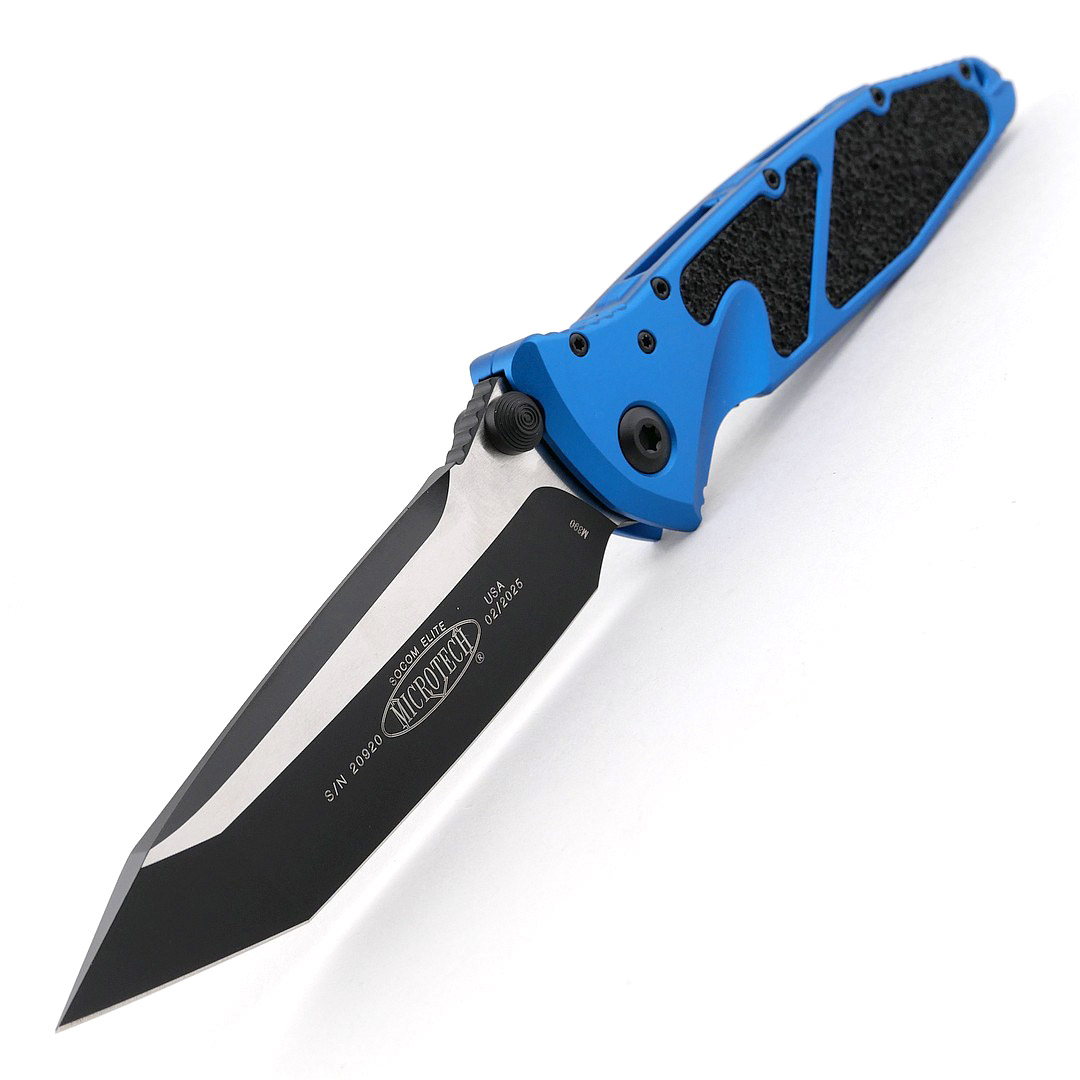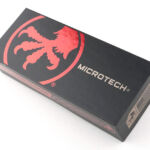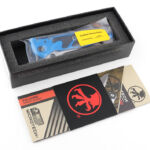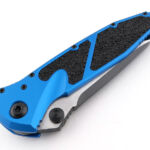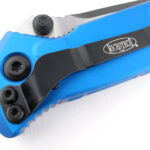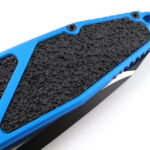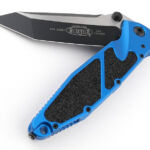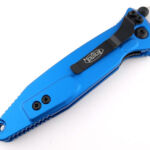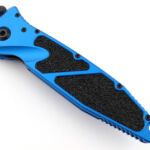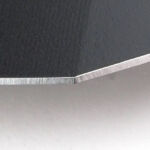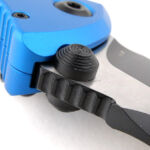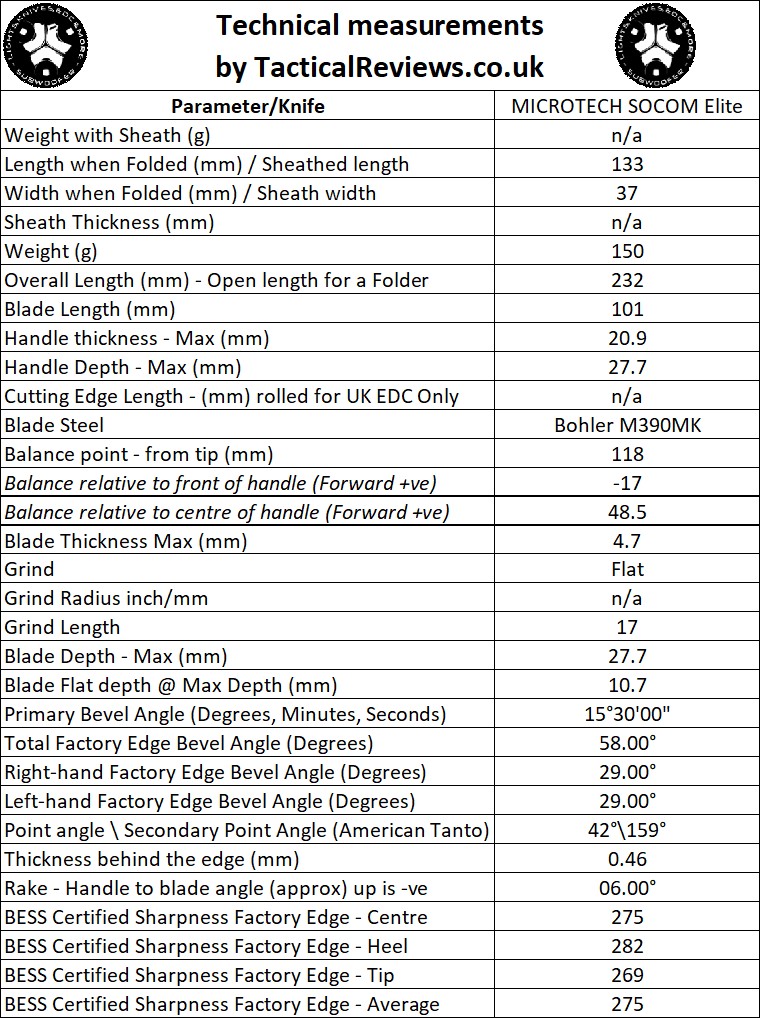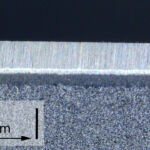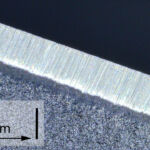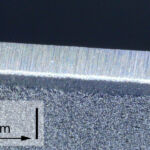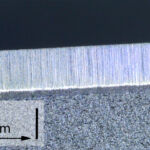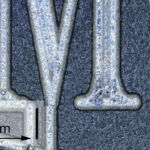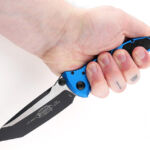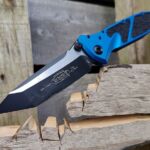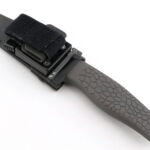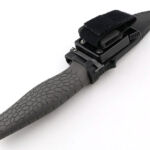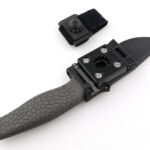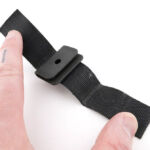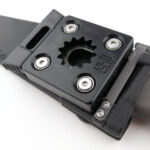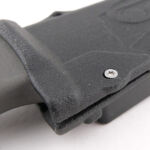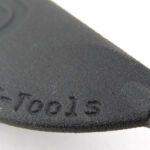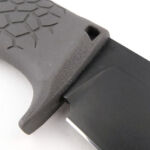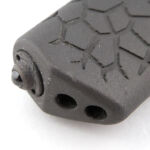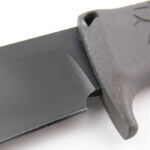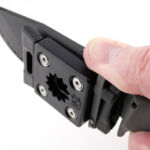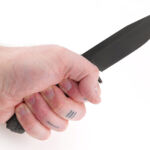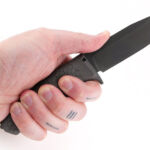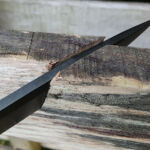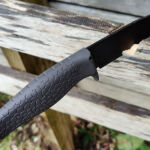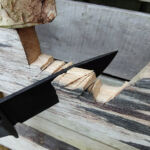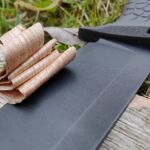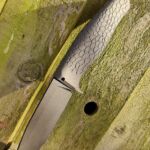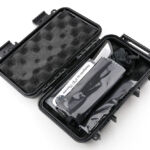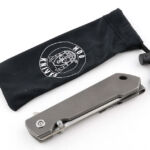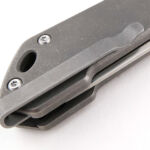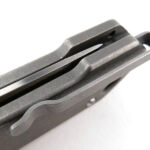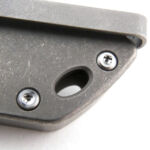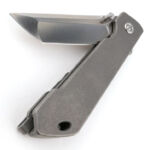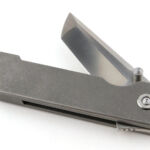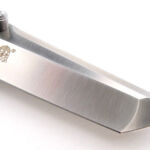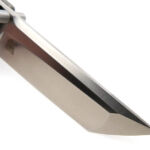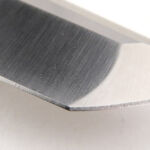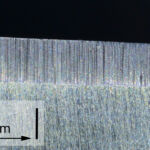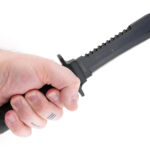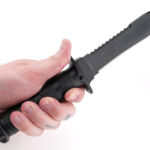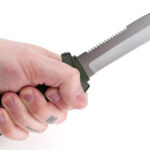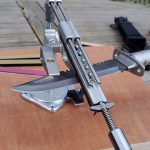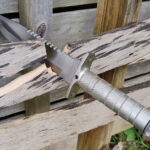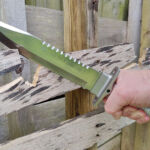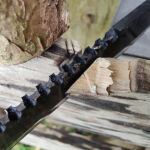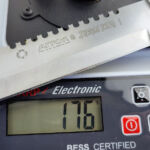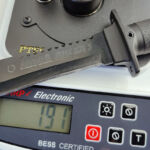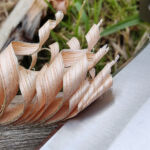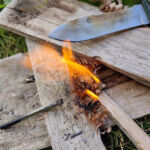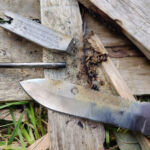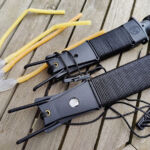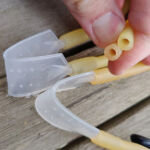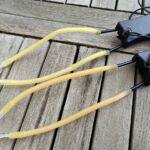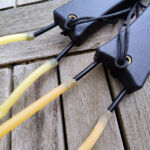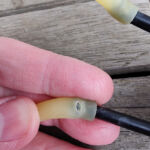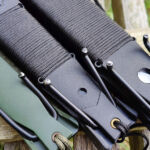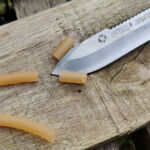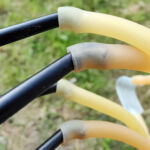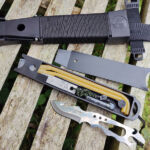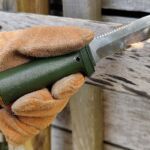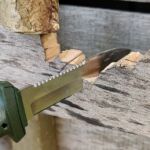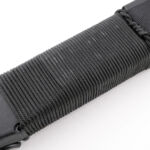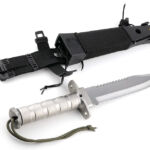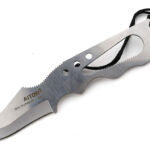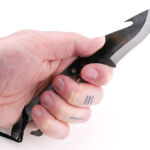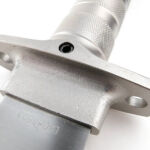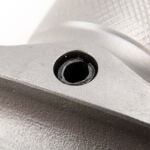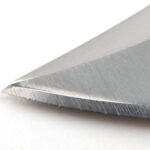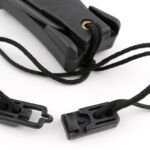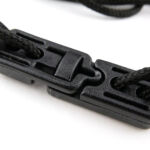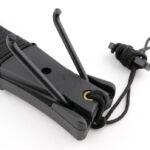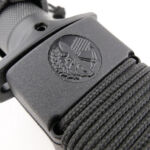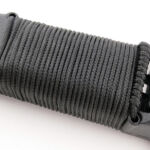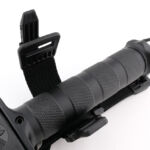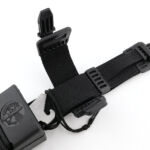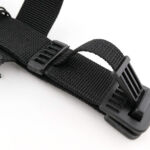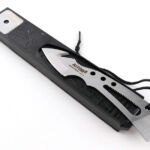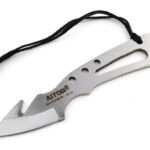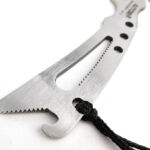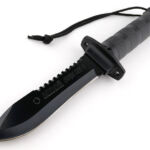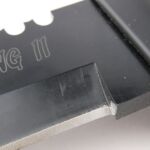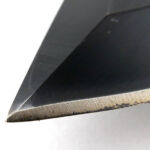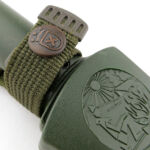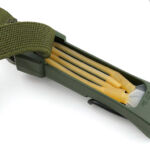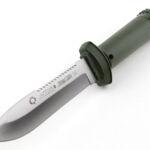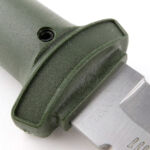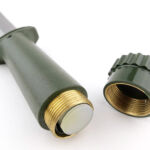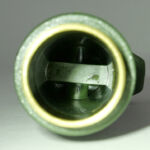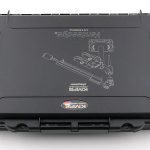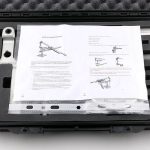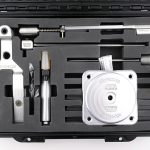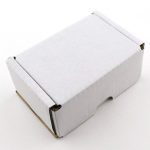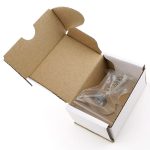In this detailed review of the MKM (Maniago Knife Makers) Jaques – a modern slip joint Folding Knife – find out if it could be your ideal EDC companion.
The MKM Jaques is a slip joint folding knife designed by Jesper Voxnaes. The Jaques has a satin finish CPM MagnaCut Wharncliffe blade, and the version in this review features Fat Carbon DARK MATTER BLACK handles.
“The Jaques design is my modern take on the folders I have seen used by European winegrowers in both Italy and France but mixed with details from some of my favourite American slip joint patterns. A nice sized utility folder, in high-end materials, with great feel in hand. A perfect for EDC for urban and outdoor settings.” Jesper
Read on in this MKM Jaques Review for all the details.
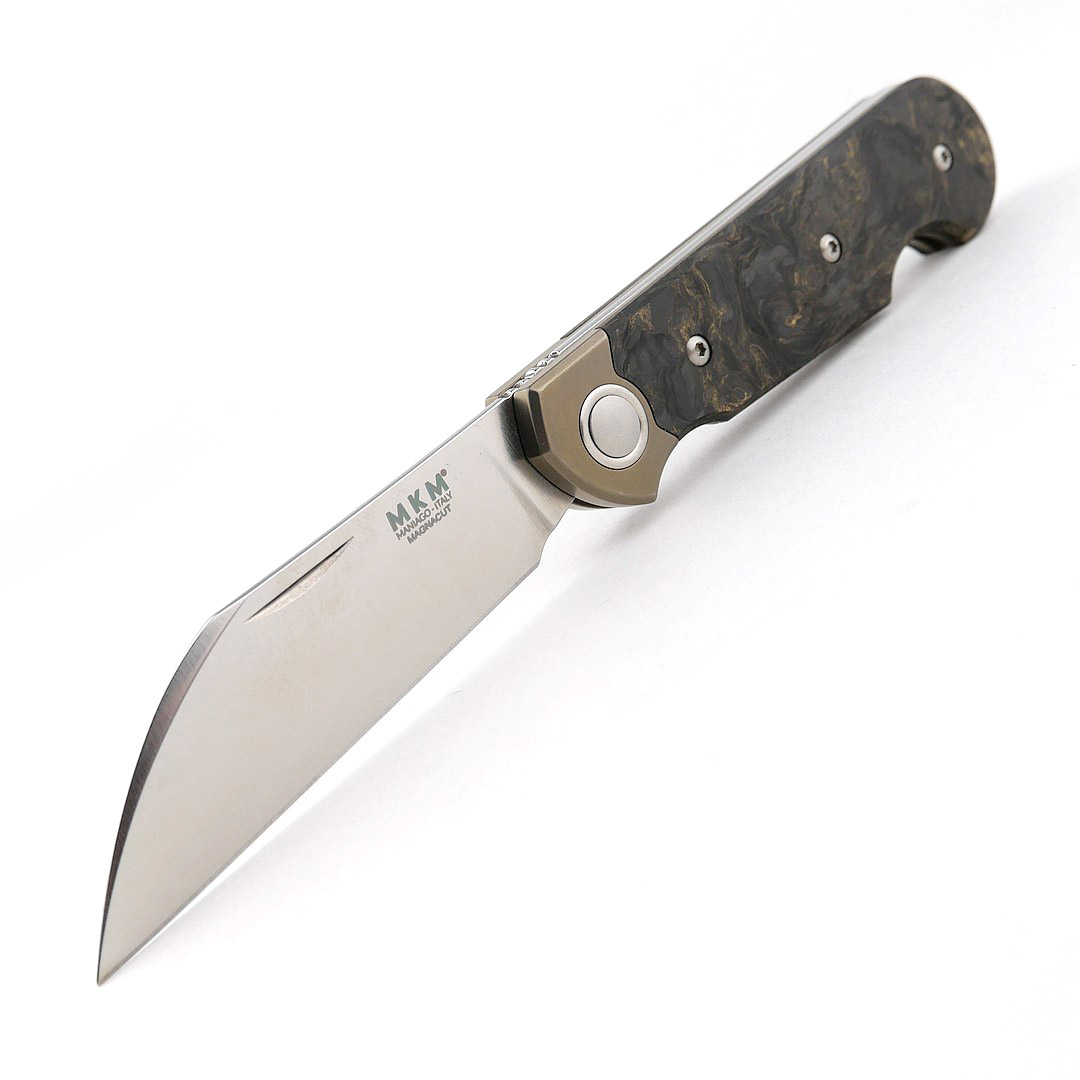
What’s in the box?:
For this section there is no box or packaging to include, as this specific knife was a ‘show knife’ at IWA Outdoor Classics 2025 (and possibly other exhibitions). It also means that in the following galleries, any imperfections will be due to the knife being handled by a lot of people during the trade fair.

A good look round the folded MKM Jaques – Things to look out for here are:
With this version, the DARK MATTER BLACK handles compliment the bronze titanium bolsters/liners perfectly. Each and every knife with this handle material is unique, and the handle scales are secured to the combined bolster and liner with three screws. A single position stainless steel wire pocket clip, can be removed if you prefer not to use it. Only one side of the pivot bolt has a torx screw head, with the other being blank. The back-spring spacer is beautifully polished giving the Jaques a very refined look. The pivot specification states ball bearings. No bearings can be seen when looking into the knife, so these covered bearings should be more dust resistant than when you can see the ball bearings themselves.
A good look round the open MKM Jaques – Things to look out for here are:
Snapping the Jaque’s blade initially out to the half-stop position, we get a good view of the wide Wharncliffe blade. With the blade open we can more clearly see the handle shaping with two finger grooves; first finger and third finger. It’s a powerful full-flat grind Wharncliffe blade with elegant swedge sweeping down to the point, which also has an inconspicuously incorporated nail nick. MKM’s logo sits above the engraving of the steel type; Magnacut. Though not strictly a sharpening choil, the heel of the cutting edge does stand proud of the tang, and just forward of the plunge line; this allows the entire cutting edge to be sharpened. On the opposite side of the blade, the designer’s (Jesper Voxnaes) logo is engraved and onto more views of the blade.
Thumb grip jimping has been included across the ‘H’, and you can also see the small clearance step cut around the pivot to ensure the blade rotates without contacting the liner. Looking inside the handle you can see the stop pin for the blade tang to rest on when folded.
The Blade and Handle – Detailed Measurements:
For full details of the tests and measurements carried out and an explanation of the results, see the page – Knife Technical Testing – How It’s Done.
The blade is made from Magnacut steel.
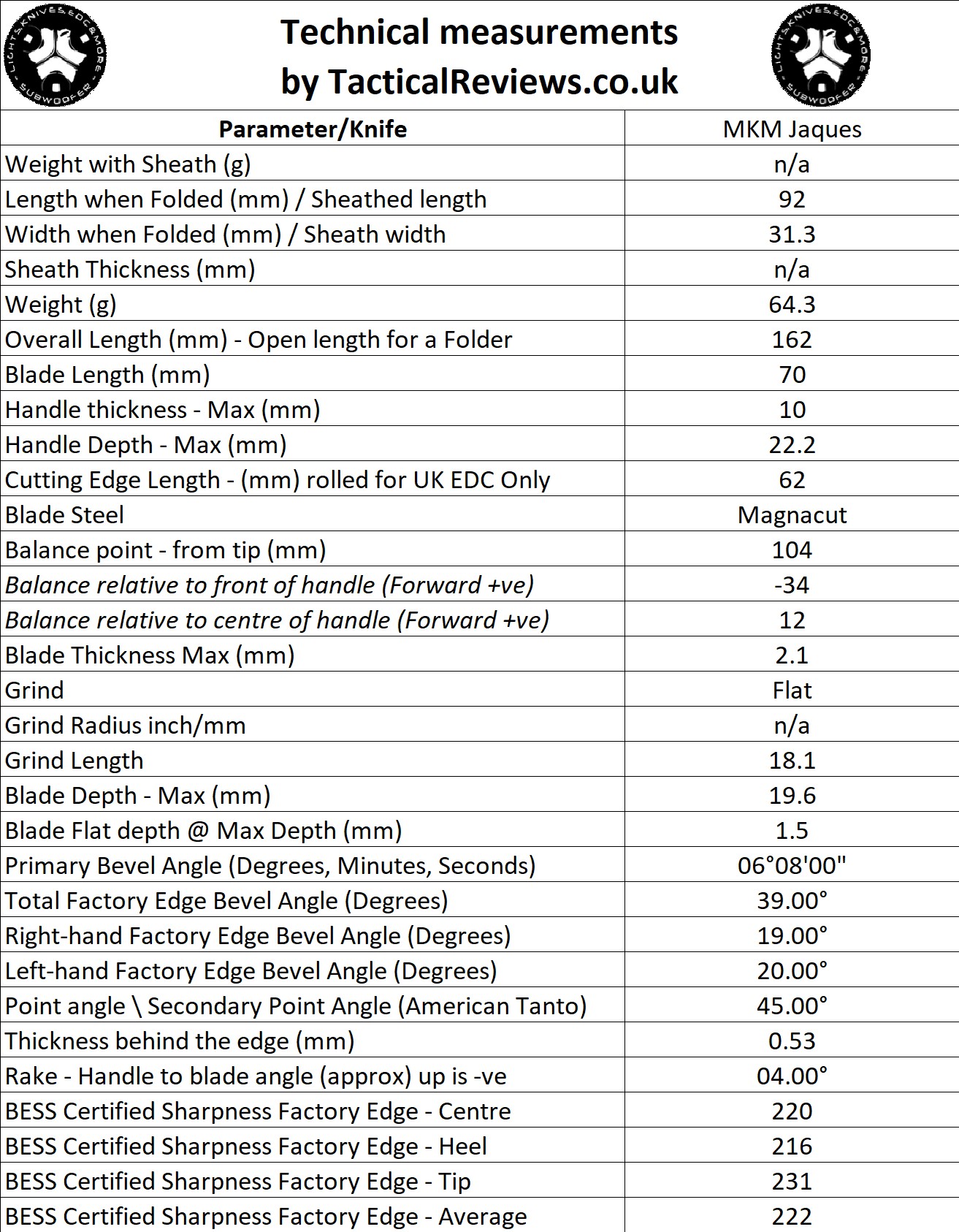
With the Jaques being a slip-joint folder, the resistance to closing (and related stiffness of opening) is an important factor, so for this I carry out Torque measurements for opening and closing. The detailed video for this knife includes a section explaining this in more detail.
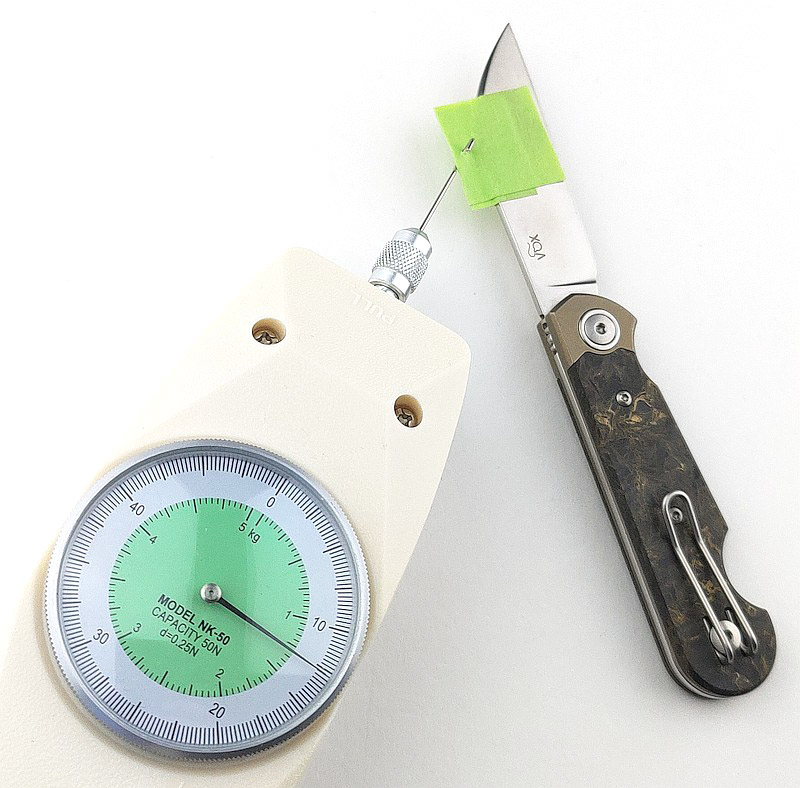
And the torque measurements for the Jaques (for further reference values check the Technical Testing link):

The Factory edge up close:
Followers of Tactical Reviews will know my views on factory edges, but to recap:
Anyone using a knife will need to sharpen it. That first factory edge is just like the first tank of fuel that a new car comes with (or first charge of the battery).
A good factory edge is a ‘nice to have’ but not a ‘make or break’ for a good knife, as you will be putting your own edge onto it soon enough.
The factory edge does however indicate the care a knife maker has put into the final finish.
It is for this reason Tactical Reviews measures factory edge sharpness and specifications, and includes this information in the detailed technical testing.
As a further look at the factory edge, this section has been added to include some high magnification photos of the factory edges.
What is it like to use?
The MKM Jaques immediately strikes you as both traditional and cutting edge design (pun intended), with a fusion of classic lines and styles with the very latest materials in a really easy to carry tool. Remember that ease of carry is what makes a tool the best one you have, as the fact you have it on you means it is the best tool for the job.
However, it is not only easy of carry, but that you choose to carry it, that is the final determining factor for being the best tool. For me, a Wharncliffe blade has always been one of the most practical choices, with the blade tip presented for immediate use, and the straight cutting edge easy to control, plus it is also easy to maintain the straight edge.
I take an XL size glove, and some pocket knives can feel too small in the hand; the Jaques does not. Compact, yes, but a very useful size. With the first and third finger grip grooves, it is very stable in your hand. Bearing in mind this is a slip-joint, so you are not going to be working it very hard, there is plenty of grip and plenty of blade.
I would prefer a slightly deeper carry clip so that only the clip is visible in your pocket and none of the handle, but the clip, as it is, is very neat. That would just be a slight change I would make if I could.
The action is nicely crisp, with a good resistance to closing (as proven by the torque measurements). In a slip-joint, I remain unconvinced about the benefits of using ball bearings; this is a personal view relating to the fact there is significant slip-joint back-spring pressure, and considering that over the full lifetime of the knife solid washers would removing the possibility of dirt/grit affecting ball bearings. However, it is very smooth in action, even with the spring resistance making that action very firm, so whatever my personal preferences may be, the blade action is very slick and pleasing.
Looking back at this gallery, I realise that all the jobs I have been using the Jaques for have been those smaller, make a cut – fold and stow, type of jobs and I wasn’t getting a camera out to capture it. Round the garden, at the post office, DIY, at work, all those jobs you use the knife you have on you to do. All done with ease and comfort, while appreciating the fit, finish, action and really effective blade. I’ve only once substituted the Jaques for one job where I preferred to use a disposable utility knife for – no point in knowingly damaging a quality knife for the sake of it.
As I write I also realise the edge has not needed any touch up, even considering this was the original edge that has been to big exhibitions and been used, dropped, handled so many times, yet it is still going strong.
Sadly these days, a knife’s looks are also important for the wrong reasons. What I mean by this is that some knives look ‘dangerous’ (in the words of others), but the Jaques has a gentle, traditional, look and feel which has been well received universally. In fact, it has been often complimented by people that might otherwise be critical of a knife. This allows you to feel more relaxed using the knife when others might see. A rare thing to really be able to enjoy using a knife wherever you are (at least in the UK).
MKM Jaques Review Summary
The views expressed in this summary table are from the point of view of the reviewer’s personal use. I am not a member of the armed forces and cannot comment on its use beyond a cutting tool or field/hunting knife.
Something that might be a ‘pro’ for one user can be a ‘con’ for another, so the comments are categorised based on my requirements. You should consider all points and if they could be beneficial to you.
_______________________________________________
What doesn’t work so well for me
_______________________________________________
Pocket clip could be ‘deeper carry’.
Are ball bearings necessary for the pivot?
_______________________________________________
Things I like
_______________________________________________
Magnacut, Titanium and Carbon Fibre construction.
Traditional design styling.
Wide full-flat Wharncliffe blade.
Firm slip-joint action.
Integral bolster and liner.
Polished back spring detail.
Compact and easy to carry.
Excellent grip with first and third finger grooves.
Easy pinch-grip opening.
MKM Jaques Review Videos
Starting with a short format sixty second review:
Onto a full video review covering many more details:

Discussing the MKM Jaques Review:
Something new – will it work? A Tactical Reviews Subreddit.
TacticalReviewsChat on Reddit
Please visit there and start/join the conversation.
